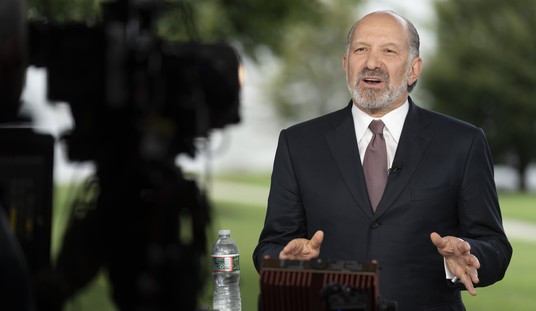Once upon a time, an American public school student was expected to be able to name principal parts of speech; define and give examples of verse, stanza, and paragraph; write an intelligible one-page composition; compute interests, discounts, and tax rates; describe major events in U.S. history; have an understanding of the U.S. government; and be sufficiently familiar with geography to be able to talk about climate, its causes and effects, and to identify and locate continents, major rivers, and important world capitals, in order to graduate.
If you follow that link, you’ll see that is a somewhat abbreviated list of what was really contained in the test for graduation from the eighth grade in Salinas, Kansas, in 1895. The link I’ve given is to the Snopes.com article with both test questions and commentary, and which correctly notes that a lot of the specific questions might not apply very well today. But I think that misses the general point. You could construct a test of similar difficulty, considering miles per gallon and substituting the Middle East for South America. It would still be an unusual eighth grade public school student who could pass that test.
Not that we don’t spend the money. The average cost per student per school year in the New York Public School system is $14,119. This would correspond to about $612 in 1895 — which is roughly the budget for an entire county school in Kansas at the time.
This comparison occurred to me a while ago, while I was visiting the Adams County Colorado Historical Society, which has a preserved one-room school house. It wasn’t prepossessing by any means, just a one-room building about thirty feet by forty, with a small cloakroom and a cast iron stove. There were books and blackboards, desks for the teacher and for students, and not much else. But schools like that graduated eighth graders who could pass that test.
I began to wonder: could we simply re-create that one-room school in today’s world? Could it be done economically?
So, as a thought experiment, I constructed a proposal for a revived one-room school. Since I had a cost per student for New York, I’d develop a plan for New York City — in fact, for midtown Manhattan, using midtown Manhattan rents. Could I pay a teacher enough to live on, with a one-room school, based on New York costs per student?
The full details are on a page on my own blog Explorations, but here are the basics. The Adams County school has room for 24 students, so we assume 24 students in Manhattan, and a one-room school built in quality office space in midtown. I laid out a floor plan and discovered we could fit it nicely into 1,050 square feet; equip it with good quality desks and chairs and with one iMac computer for every two students, plus one for the teacher and a Mac Pro as a classroom server; and add Internet connections and $1,000 per student for books and supplies. How much remained to hire a teacher?
$230,000. Almost a quarter of a million dollars.
I think we’ve solved the problem of recruiting good teachers. For $230,000 a year, it would be the rejects from elementary teaching who would go to Harvard.
Well, what about the education, then? Can we teach kids effectively in a one-room school? Or would the children suffer from that environment?
Historically, it seems unlikely: after all, the kids who were passing that Salinas exam spent most or all of their lives in one-room schools. In fact, there are several reasons to think one-room schools might be more effective than today’s schools, not less (reasons beyond the apparently different outcomes.) In a mixed class one-room school, the older students are expected to study independently while the teacher helps the younger students, a skill that will help them in academic life later. On the other hand, older students were expected to help teach the younger ones, and as every teacher knows, it’s hard to beat teaching a topic as a way to be sure you’ve learned it.
There is one more reason, though, that I think the one-room school might be better. The conventional model of schools today was heavily influenced by the progressive pragmatists like Dewey, by the industrial engineering of Galbraith, and by Henry Ford’s assembly lines. They have an essentially industrial model, where students are grouped into age cohorts and moved through their grade levels like workpieces through an assembly line. But there’s an old saying that a school is “a log with a teacher on one end and a student on the other.” Traditional (as opposed to conventional) schooling, or apprenticeship, operated on a model we might call a mastery model: when one was apprenticed to a potter, the potter was going to teach you to make pots or else. It wasn’t the job of the one-room schoolmarm to move the students through the grades; they were expected to get results.
If they didn’t get results, the schoolmarm’s employers — the parents — would know the reason why. The schoolmarm’s continued employment was directly conditional on satisfying her students’ parents, which meant the teachers taught for the students mastery, not for their “age appropriate progress.”
In many ways, the one-room school environment was more like homeschooling now, and while I don’t know of any well-controlled statistical studies, anyone who listens to the news hears stories fairly commonly about homeschooled students winning the national spelling bee or maxing out their SAT scores. There are plenty of reasons that could affect that — perhaps parents who homeschool are more motivated, and perhaps they start out better educated and more intelligent than average — but given the relatively small number of homeschoolers in the general population, we have to be suspicious that homeschoolers have some inherent advantage.
When I started this project, it really was just a “modest proposal,” although I wonder if it wouldn’t work. But the real purpose of a thought experiment like this one is to test some other idea. I think the most important point this thought experiment makes is this: we spend amazing amounts of money per student, while school administrators complain they can’t pay teachers well and they need more money to run their schools, and while students’ educational outcomes seem to get worse and worse.
We’ve seen that we could go back to the model of a hundred years ago. It’s not only possible, it would make teaching into one of the most well-paid jobs in the country, even the world, and still save money. As a close friend put it, “where is the money going?”
I don’t know. But I think it might be nice if someone found out.
Charlie Martin is a Colorado computer scientist and nearly-successful screenwriter who contributes to the Flares Into Darkness political blog as ‘Seneca the Younger,’ and blogs under his own name at the aggressively non-political Explorations blog.










Join the conversation as a VIP Member